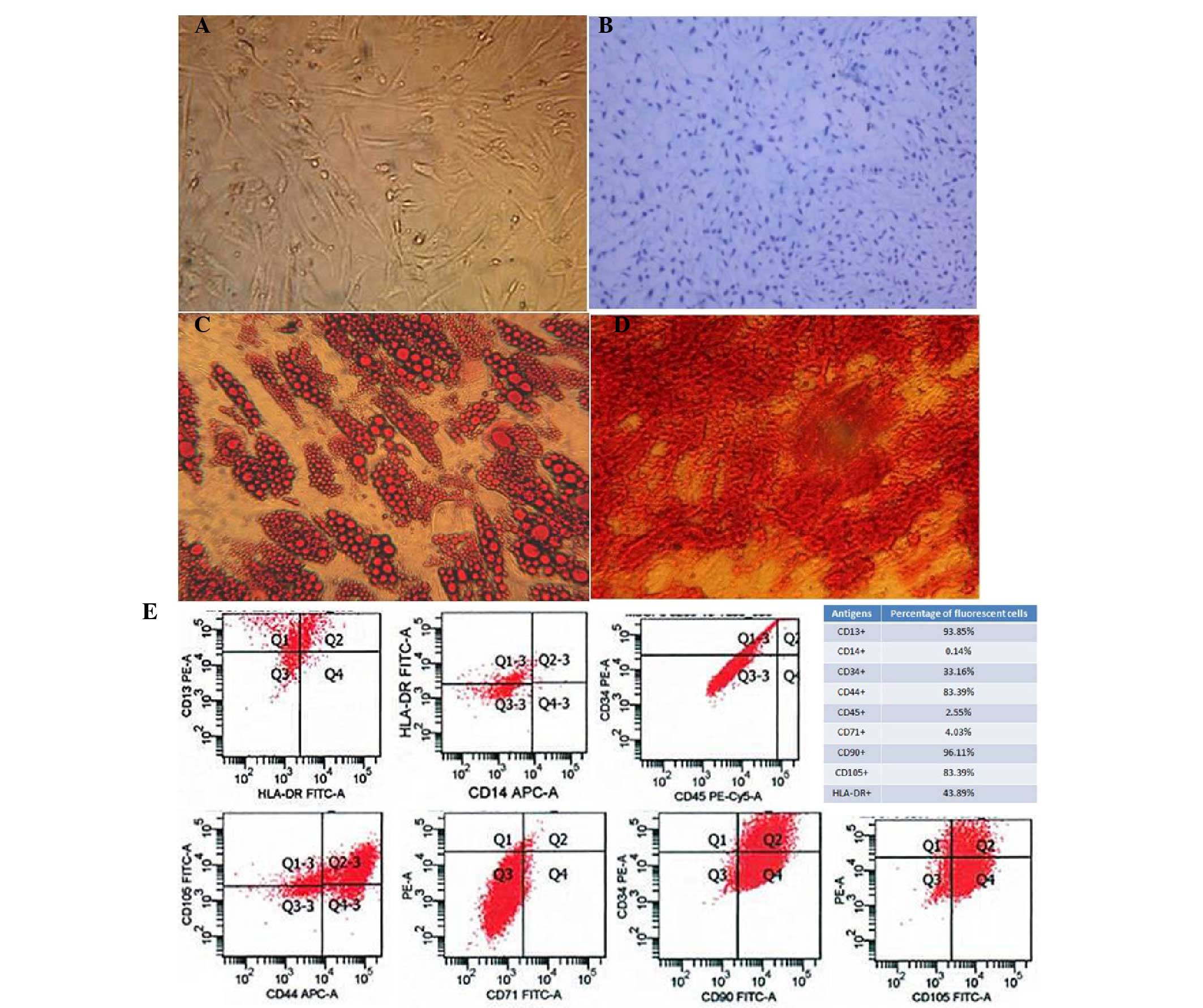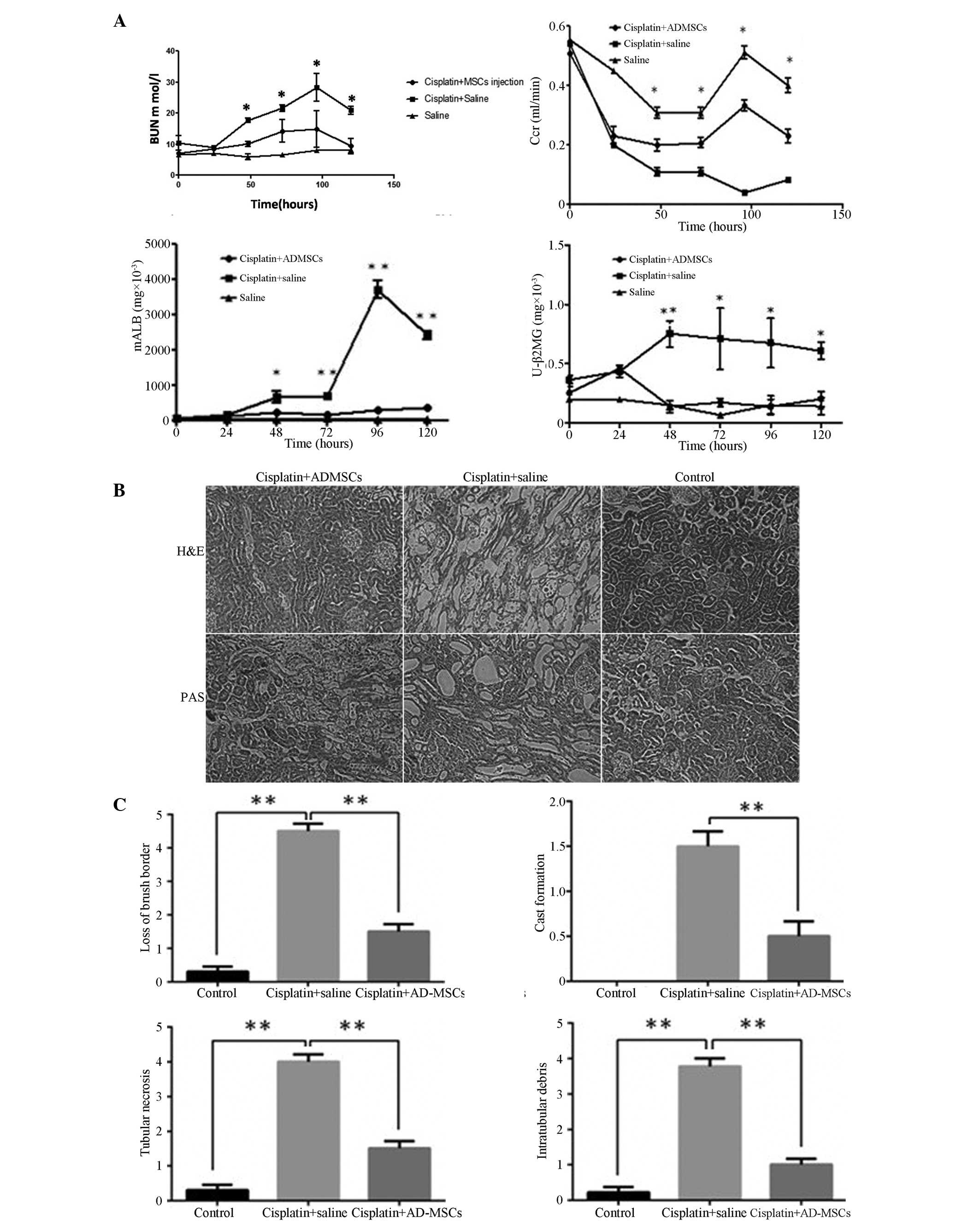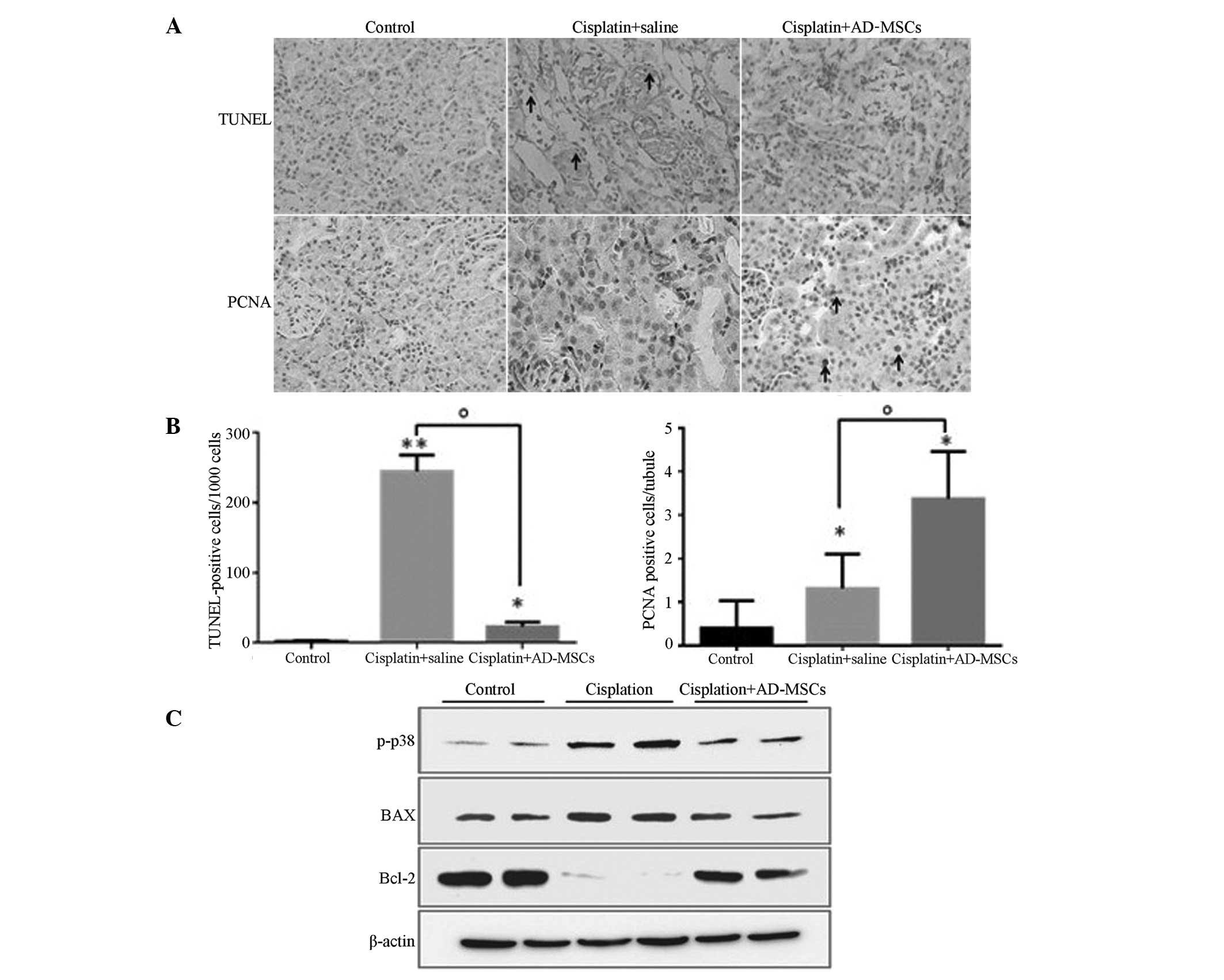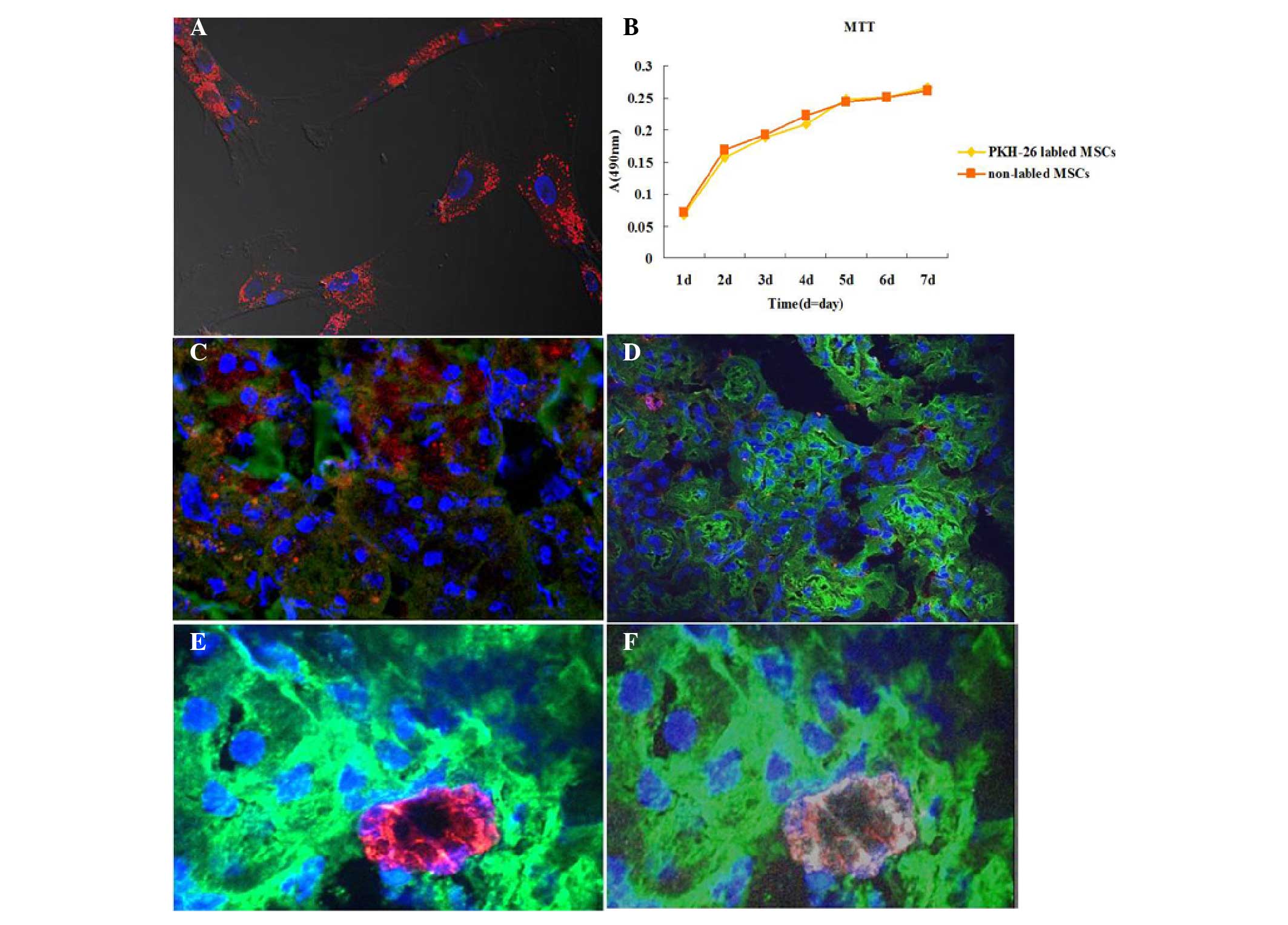|
1
|
Lebwohl D and Canetta R: Clinical
development of platinum complexes in cancer therapy: an historical
perspective and an update. Eur J Cancer. 34:1522–1534. 1998.
View Article : Google Scholar : PubMed/NCBI
|
|
2
|
dos Santos NA, Carvalho Rodrigues MA,
Martins NM and dos Santos AC: Cisplatin-induced nephrotoxicity and
targets of nephroprotection: an update. Arch Toxicol. 86:1233–1250.
2012. View Article : Google Scholar : PubMed/NCBI
|
|
3
|
Heidemann HT, Müller S, Mertins L, Stepan
G, Hoffmann K and Ohnhaus EE: Effect of aminophylline on cisplatin
nephrotoxicity in the rat. Br J Pharmacol. 97:313–318. 1989.
View Article : Google Scholar : PubMed/NCBI
|
|
4
|
Francescato HD, Costa RS, Scavone C and
Coimbra TM: Parthenolide reduces cisplatin-induced renal damage.
Toxicology. 230:64–75. 2007. View Article : Google Scholar : PubMed/NCBI
|
|
5
|
Werner M, Costa MJ, Mitchell LG and Nayar
R: Nephrotoxicity of xenobiotics. Clin Chim Acta. 237:107–154.
1995. View Article : Google Scholar : PubMed/NCBI
|
|
6
|
Jiang M and Dong Z: Regulation and
pathological role of p53 in cisplatin nephrotoxicity. J Pharmacol
Exp Ther. 327:300–307. 2008. View Article : Google Scholar : PubMed/NCBI
|
|
7
|
Clark JS, Faisal A, Baliga R, Nagamine Y
and Arany I: Cisplatin induces apoptosis through the ERK-p66shc
pathway in renal proximal tubule cells. Cancer Lett. 297:165–170.
2010. View Article : Google Scholar : PubMed/NCBI
|
|
8
|
Ramesh G and Reeves WB: TNF-alpha mediates
chemokine and cytokine expression and renal injury in cisplatin
nephrotoxicity. J Clin Invest. 110:835–842. 2002. View Article : Google Scholar : PubMed/NCBI
|
|
9
|
Zhang B, Ramesh G, Norbury CC and Reeves
WB: Cisplatin-induced nephrotoxicity is mediated by tumor necrosis
factor-alpha produced by renal parenchymal cells. Kidney Int.
72:37–44. 2007. View Article : Google Scholar : PubMed/NCBI
|
|
10
|
Zhuang S and Schnellmann RG: A
death-promoting role for extracellular signal-regulated kinase. J
Pharmacol Exp Ther. 319:991–997. 2006. View Article : Google Scholar : PubMed/NCBI
|
|
11
|
Morigi M, Imberti B, Zoja C, et al:
Mesenchymal stem cells are renotropic, helping to repair the kidney
and improve function in acute renal failure. J Am Soc Nephrol.
15:1794–1804. 2004. View Article : Google Scholar : PubMed/NCBI
|
|
12
|
Morigi M, Rota C, Montemurro T, et al:
Life-sparing effect of human cord blood-mesenchymal stem cells in
experimental acute kidney injury. Stem Cells. 28:513–522.
2010.PubMed/NCBI
|
|
13
|
Peng X, Xu H, Zhou Y, et al: Human
umbilical cord mesenchymal stem cells attenuate cisplatin-induced
acute and chronic renal injury. Exp Biol Med (Maywood).
238:960–970. 2013. View Article : Google Scholar : PubMed/NCBI
|
|
14
|
Humphreys BD and Bonventre JV: Mesenchymal
stem cells in acute kidney injury. Annu Rev Med. 59:311–325. 2008.
View Article : Google Scholar : PubMed/NCBI
|
|
15
|
Kusaba T, Lalli M, Kramann R, Kobayashi A
and Humphreys BD: Differentiated kidney epithelial cells repair
injured proximal tubule. Proc Natl Acad Sci USA. 111:1527–1532.
2014. View Article : Google Scholar : PubMed/NCBI
|
|
16
|
Maeshima A, Yamashita S and Nojima Y:
Identification of renal progenitor-like tubular cells that
participate in the regeneration processes of the kidney. J Am Soc
Nephrol. 14:3138–3146. 2003. View Article : Google Scholar : PubMed/NCBI
|
|
17
|
Tadagavadi RK and Reeves WB: Renal
dendritic cells ameliorate nephrotoxic acute kidney injury. J Am
Soc Nephrol. 21:53–63. 2010. View Article : Google Scholar : PubMed/NCBI
|
|
18
|
Zhu XY, Urbieta-Caceres V, Krier JD,
Textor SC, Lerman A and Lerman LO: Mesenchymal stem cells and
endothelial progenitor cells decrease renal injury in experimental
swine renal artery stenosis through different mechanisms. Stem
Cells. 31:117–125. 2013. View Article : Google Scholar : PubMed/NCBI
|
|
19
|
Altun B, Yilmaz R, Aki T, et al: Use of
mesenchymal stem cells and darbepoetin improve ischemia-induced
acute kidney injury outcomes. Am J Nephrol. 35:531–539. 2012.
View Article : Google Scholar : PubMed/NCBI
|
|
20
|
Bian X, Zhang B, Guo W, et al: Effects of
mesenchymal stem cells transplanted at different time points in a
rat remnant kidney model. Am J Nephrol. 39:75–84. 2014. View Article : Google Scholar : PubMed/NCBI
|
|
21
|
Bussolati B, Tetta C and Camussi G:
Contribution of stem cells to kidney repair. Am J Nephrol.
28:813–822. 2008. View Article : Google Scholar : PubMed/NCBI
|
|
22
|
Kitamura S, Yamasaki Y, Kinomura M, Sugaya
T, Sugiyama H, Maeshima Y and Makino H: Establishment and
characterization of renal progenitor like cells from S3 segment of
nephron in rat adult kidney. FASEB J. 19:1789–1797. 2005.
View Article : Google Scholar : PubMed/NCBI
|
|
23
|
Kim JH, Park DJ, Yun JC, et al: Human
adipose tissue-derived mesenchymal stem cells protect kidneys from
cisplatin nephrotoxicity in rats. Am J Physiol Renal Physiol.
302:F1141–F1150. 2012. View Article : Google Scholar : PubMed/NCBI
|
|
24
|
Reinders ME and Rabelink TJ: Adipose
tissue-derived stem cells: can impure cell preparations give pure
results? Nephrol Dial Transplant. 25:3805–3807. 2010. View Article : Google Scholar : PubMed/NCBI
|
|
25
|
Brzoska M, Geiger H, Gauer S and Baer P:
Epithelial differentiation of human adipose tissue-derived adult
stem cells. Biochem Biophys Res Commun. 330:142–150. 2005.
View Article : Google Scholar : PubMed/NCBI
|
|
26
|
Huang HC, Chang YJ, Chen WC, Harn HI, Tang
MJ and Wu CC: Enhancement of renal epithelial cell functions
through microfluidic-based coculture with adipose-derived stem
cells. Tissue Eng Part A. 19:2024–2034. 2013. View Article : Google Scholar : PubMed/NCBI
|
|
27
|
Katsuno T, Ozaki T, Saka Y, et al: Low
serum cultured adipose tissue-derived stromal cells ameliorate
acute kidney injury in rats. Cell Transplant. 22:287–297. 2013.
View Article : Google Scholar : PubMed/NCBI
|
|
28
|
Shih YC, Lee PY, Cheng H, Tsai CH, Ma H
and Tarng DC: Adipose-derived stem cells exhibit antioxidative and
antiapoptotic properties to rescue ischemic acute kidney injury in
rats. Plast Reconstr Surg. 132:940e–951e. 2013. View Article : Google Scholar : PubMed/NCBI
|
|
29
|
Shin S, Kim Y, Jeong S, Hong S, Kim I, Lee
W and Choi S: The therapeutic effect of human adult stem cells
derived from adipose tissue in endotoxemic rat model. Int J Med
Sci. 10:8–18. 2013. View Article : Google Scholar : PubMed/NCBI
|
|
30
|
Wang W, Wang W, Jiang Y, Li Z, et al:
Human adipose-derived stem cells modified by HIF-1α accelerate the
recovery of cisplatin-induced acute renal injury in vitro.
Biotechnol Lett. 36:667–676. 2014. View Article : Google Scholar : PubMed/NCBI
|
|
31
|
Zhang L, Li K, Liu X, et al: Repeated
systemic administration of human adipose-derived stem cells
attenuates overt diabetic nephropathy in rats. Stem Cells Dev.
22:3074–3086. 2013. View Article : Google Scholar : PubMed/NCBI
|
|
32
|
Zuk PA, Zhu M, Ashjian P, et al: Human
adipose tissue is a source of multipotent stem cells. Mol Biol
Cell. 13:4279–4295. 2002. View Article : Google Scholar : PubMed/NCBI
|
|
33
|
Morigi M, Introna M, Imberti B, et al:
Human bone marrow mesenchymal stem cells accelerate recovery of
acute renal injury and prolong survival in mice. Stem Cells.
26:2075–2082. 2008. View Article : Google Scholar : PubMed/NCBI
|
|
34
|
Qi S and Wu D: Bone marrow-derived
mesenchymal stem cells protect against cisplatin-induced acute
kidney injury in rats by inhibiting cell apoptosis. Int J Mol Med.
32:1262–1272. 2013.PubMed/NCBI
|
|
35
|
Francescato HD, Costa RS, da Silva CG and
Coimbra TM: Treatment with a p38 MAPK inhibitor attenuates
cisplatin nephrotoxicity starting after the beginning of renal
damage. Life Sci. 84:590–597. 2009. View Article : Google Scholar : PubMed/NCBI
|
|
36
|
Iwayama H and Ueda N: Role of
mitochondrial Bax, caspases, and MAPKs for ceramide-induced
apoptosis in renal proximal tubular cells. Mol Cell Biochem.
379:37–42. 2013. View Article : Google Scholar : PubMed/NCBI
|


















